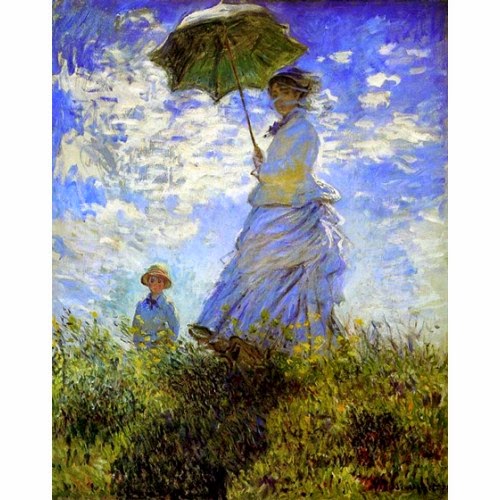Impressionism is a 19th century art movement which originated in France. Artists would create landscape paintings of what they saw which became impressionist paintings. The focus of impressionism is usually to capture the essence of light as it hits an object. Impressionist paintings consists of small and consistent brush strokes, drawing attention to the idea of movement. The artist were known as impressionists and would paint outside. Painting ouside limited their time to mix colors therefore they were forced to paint more quickly to keep up with the changing daylight. As a result their works seemed to come off as messy or unpolished. The painters focused on making the color and contrast stand out, to catch the viewers eye like it would in real life.
‘ Woman with a Parasol ‘
Claude Monet
1875
Oil paint
Post Impressionism was based of impressionism but steers away from the traditional style. Most of these painters painted in isolation. They strayed away from the naturalism of impressionism and focused more on color, lines, forms and shapes. Generalizing their perception of the image being seen and portraying it for the viewer to see as well. Each artist uniquely displayed their artistic expression through their paintings. They used the same idea as impressionists but gave it their own spin with new techniques to express their thoughts and emotion in art. This style later inspired two major movements such as cubism and fauvism.
‘ Les Vessenots ‘ in Auvers
Vincent van Gogh
1890
Oil paint


No comments:
Post a Comment